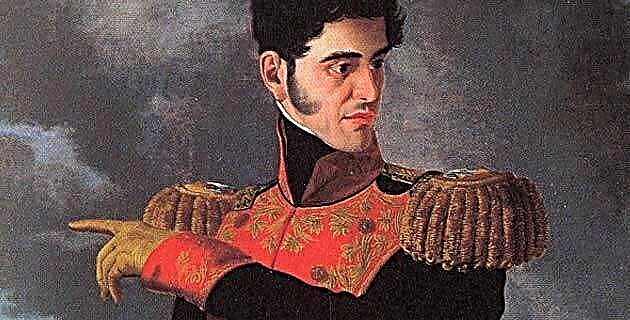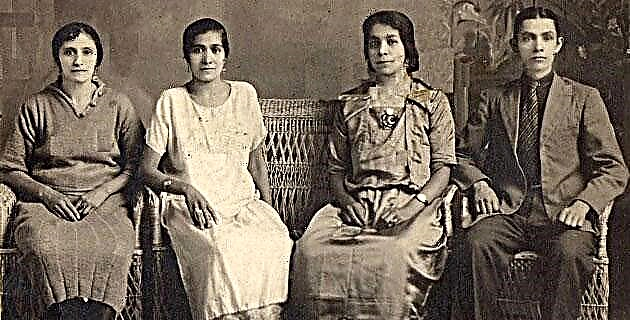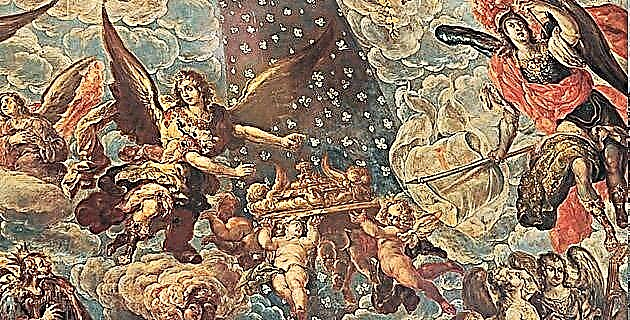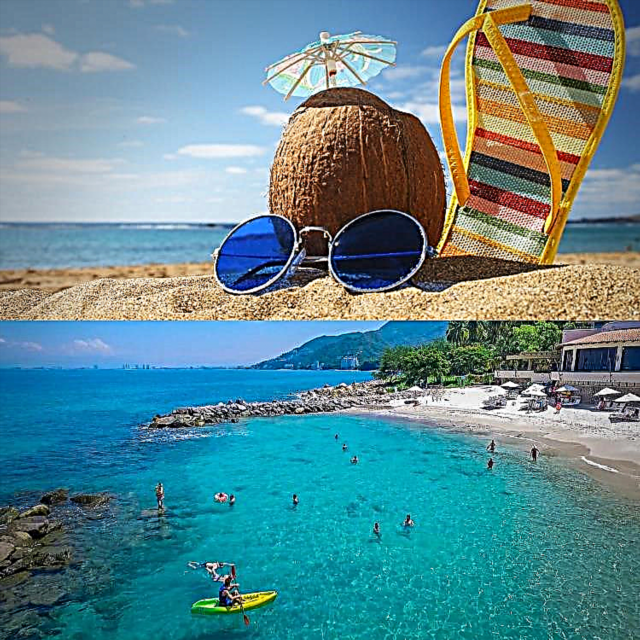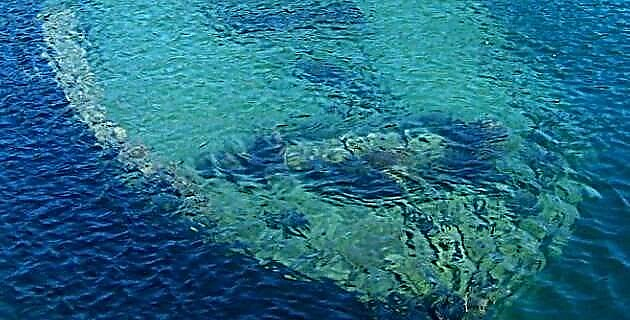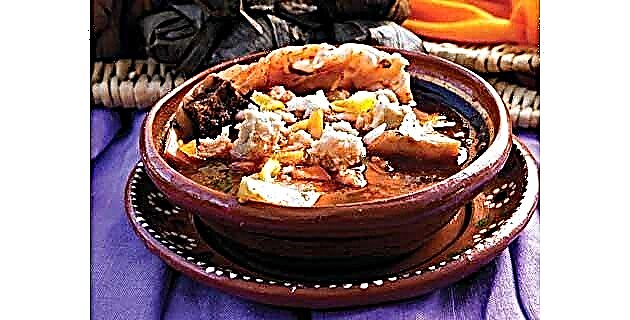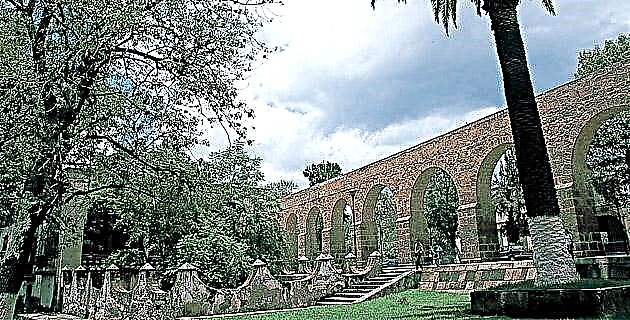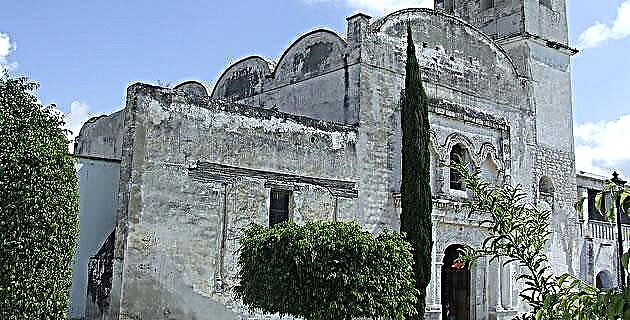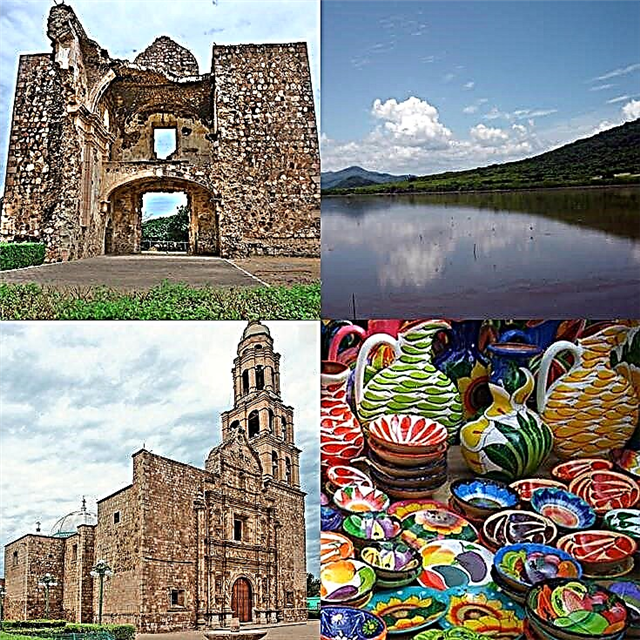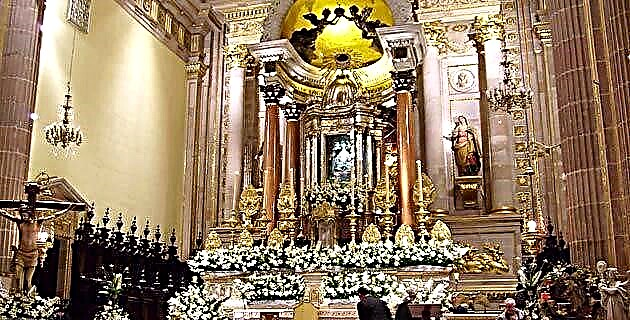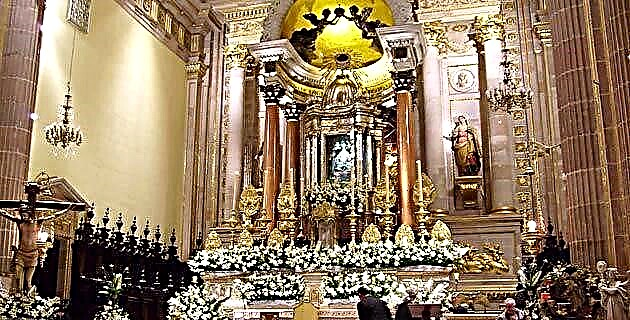
No sanctuary in Mexico, with the exception of Tepeyac, receives as many pilgrims and expressions of gratitude as that of San Juan de los Lagos in the Altos de Jalisco.
San Juan it is a city of about 40,000 inhabitants supported by the patron Virgin. The population has a strong hotel capacity, ranging from multi-star to non-star hotels. A food and restaurant capacity to serve thousands of diners simultaneously.
The gratitude industry: candles, votive offerings, little land of San Juan, photographs, pictures of the Virgin, novenas and brochures occupy the immediate sidewalks of the basilica cathedral. It is difficult to see the facades of the houses of this Alteña population, because the blankets of the mobile businesses that have already joined the many established businesses, form a large collective awning.
In San Juan everything is sold, it is the regional sideboard of the frayed from Encarnación, the fabrics from Aguascalientes, the embroideries from El Alto, the wooden crafts from Teocaltiche, the ceramics from Tonalá, the leather from León, the box from Celaya, etc. . This is not uncommon if the feast of San Juan was the origin of the Feria de San Marcos in Aguascalientes and throughout the viceregal period, the supermarket of Mexico. The largest horse and cattle sales were made there.
These commemorations of the Virgin of San Juan for him February 2nd, with the commercial appeal and its large turnout, will lead to one of the loudest parties that attracted so much at that time when fun was so scarce (16th century).
The very long processions to San Juan With badges in yellow and black they cross all the roads and paths and in opposition to the feudal charity that housed the Spanish pilgrims, ours close the hallways to the cry of "The Sanjuaneros are coming". This is not rejection or opposition to the pilgrimage so shared by the local devotion, but the prevention before the onslaught of thieves, who as a reference to this rodent, take away the belongings of the distracted in small thefts, taking advantage of the massive anonymity.
The processions imply a previous organization and a hierarchy in the conduction. The columns of pilgrims can extend for kilometers and are motivated by officers identified by bracelets and badges, who issue orders and coordinate prayers, songs, pace of advance and breaks.
In front is the banner of the parish or pilgrimage group with the yellow and black ribbons. A pilgrimage can last several weeks, depending on the place of origin. It is common for a chaplain to attend them who celebrates mass during the pilgrimage.
Other passers-by are those pilgrims who make the journey with two thorny nopal stalks as scapular on the naked back. Others go on their knees with the help of relatives who spread blankets in their wake; Sacrifice is externalized in a thousand ways, with the popular belief that whoever interrupts the commitment of his mandate, becomes stone.
San Juan de Los Lagos at last he appears as if hidden in a hole in the Los Altos hill. The impressive basilica-cathedral of magnificent quarry ashlar masonry, it challenges height with its tall towers. No one who does not know the region can imagine the height of these Jalisco churches. It is surrounded by the crowding suggested by houses on the swaying ground. The trace achieves a tight grid over the rugged terrain.
In 1542, just after the Mixtón rebellion that was about to end the Castilian conquests, it was founded, in this place called Mezquititlán or place of mesquite, the region of San Juan Bautista that from 1633 was populated by inhabitants of Santa Maria de los Lagos, so they called it San Juan de los Lagos.
In the same year of its foundation, Fray Miguel de Bolonia O.F.M. gave the nascent town an image of these so common to the Franciscans. They lacked dedication or were dedicated to the Immaculate Conception. They were to dress, that is, they only had the face and hands carved, their size fluctuated between 25 and 50 cm, which made them transportable on their horses tied to the saddle. These images have been called missionaries, military or hospital, most of them taking the name of their locality.
However, despite the antiquity of the Virgin of San Juan, the cult began until 1623, due to its celebrity as miraculous. The Jesuit Francisco de Florencia tells us when a “volantín” (circus) taught his daughters an exercise on the trapeze on the points of swords, one of them fell and died. An old woman told the parents to go and console themselves with the Sihuapilli (the Lady) of the People, who would bring their daughter back to life. They went to the hermitage and placed the sacred image on the girl's chest and in a short time it came to life. He also mentions the restoration of the moth-eaten image in one night, by a mysterious young man who disappeared without waiting for payment, this event was attributed to an angel.
From this moment on, miracles and advice crowd together, leading to the construction of the sanctuary. From 1643 to 1641 the bachelor Diego de Camarena built the first, which is known as the Chapel of the First Miracle. By 1682 the second one that is now the parish was finished. In 1732 the Bishop of Guadalajara, Carlos de Cervantes, started the current basilica in 1769, henceforth Popes Pius X, Pius XI, Pius XII and John XIII give it the rank of Collegiate Church, Basilica and Cathedral.
It is a beautiful architectural monument of the colonial era whose worship and devotion gave rise to the Annual Fair decreed by King Carlos IV on November 20, 1797. It is built on an extensive esplanade 3 m high at the front. Recessed in three of its angles and it is limited on almost all four sides by a stone balustrade. The interior contains the proportions and sobriety of the Doric order.
San Juan It also has its own well, whose story tells us that in this rocky and dry region, a girl hit the rock with a stick, water gushing out. As in all these cases the girl disappeared. The image is of corn stalk paste Totzinqueni so it is very likely that it was made in Pátzcuaro. It does not exceed 50 cm, although it is increased by the presence of the angels that carry the phylactery:Mater Inmaculata ora pro nobis. The moon and the base, all made of silver. The image is of popular manufacture and of pious expression. Not in vain is it one of the most jeweled images in Mexico.
Let's say about the church factory that it is one of the most beautiful in Mexico. Its floor plan is of a Latin cross with Gothic ribbed vaults, its height gives it a great monumentality, it has a Stations of the Cross with a good brush framed in silver and in the dressing room there is a painting attributed to Rubens.
The accumulation of votive offerings that are continually replaced is impressive. The sacristy is rich in furniture and painting, but what stands out the most is its exterior, due to the balance achieved between its large dimensions and its decoration, which marks the transition period between the Baroque and the Neoclassical.

